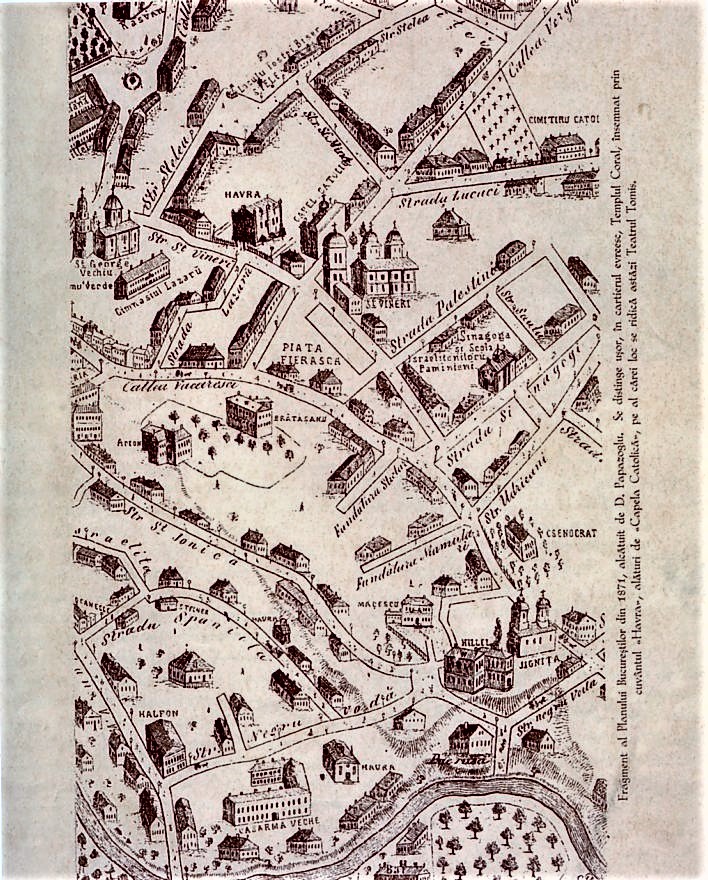
This chapter deals with the origins of the Jewish communities, synagogues and cemeteries in cities, towns and villages in Romania.
Most of the Jewish communities that developed in the Roman principalities settled in urban areas, mainly in small towns. In Moldova, these towns were built on the model of the shtetl (small town with a large Jewish population) in the Lithuanian-Polish area, with its Jewish neighborhoods and the preservation of traditional Jewish life. Thanks to Romanian feudalism and freedom of occupation and mobility, the Jews, more than in other European countries, were able to settle and prosper, not only in towns, but in villages too.
As previously noted, almost no documents attest to permanent Jewish settlement in the Romanian area before the 15th century, but findings in the field of linguistics may indicate Jewish settlement in the region from earlier periods. This refers to villages and towns whose names were derived from the word "Jid" (Jew) and "Kuzari". For example, in the south of the country, in the villages of Magura Jidovilor, near Dobreni, and Jidovita (or Jidostitsa), northeast of Turnu Severin, are known as 'the place where Jews lived', to this day.
Not far from there, the name Bunarul Jidovului was mentioned in the Dolj district in 1615. Hungarian documents mention the town of Jidovar in Transylvania, established by Khazar Jews who arrived from Hungary after the 10th century. These settlers apparently also established the villages of Kozar (1205), Căzărvar (1249) and Khuzar (near Carei) in the Maramures region, whose names are derived from the same original root; "Kuzari."
The most populated locations with names derived from the terms Jid and Kuzari are in Moldova, which was closest to the large populations of Jews in Poland and Lithuania.
The Jews of Wallachia were situated mainly in the larger cities. At the end of the 19th century, the majority of Romanian Jews lived in these cities. Their massive presence there continued until after World War I, and even intensified due to the great influx into the city that came with the growth of industrialization.
Synagogues are a clear sign of the community's stability and represent, most of all, status and identity of its members Along with the request to build a synagogue, the request to allocate land to the cemetery was among the first to be presented by the community throughout the generations to the local rulers. Cemeteries also testify to the life of the Jewish community, and are evidence of its continuity.